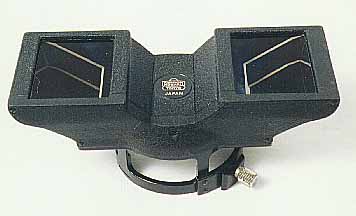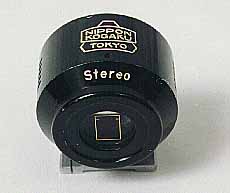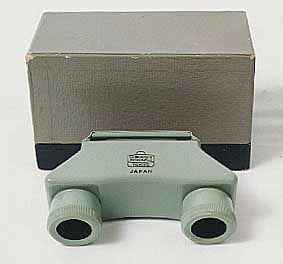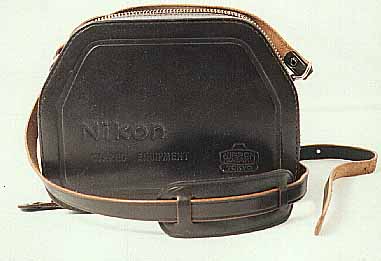
Photographica Pages
An online guide to collectable cameras and related stuff
35/3.5 Stereo-Nikkor for Rangefinder
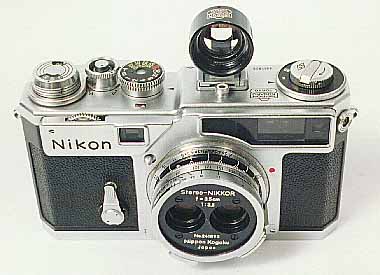
The 35/3.5 Stereo-Nikkor mounted on an SP, with the finder.

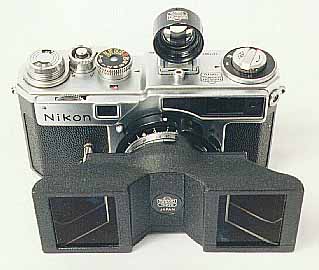
Throughout the history of photography, stereo photography has gained popularity, then fallen out of favor. It has always been a fad.. In 1940, Leitz designed the Stereo-Elmar. But the craze had died before production comenced, and the design was dropped. Those who don't learn from history are doomed to repeat it, so Leitz introduced the 33mm Stemar lens in 1954. Based on the relative scarcity of the lens today, I would hazard to guess it wasn't a commercial success. Ditto for the Steritar C built for Contax by Zeiss-Ikon (although the Steritar lenses for Contaflex are relatively common). There were even stereo lenses for the Exakta, Retina and Bolex movie equipment.
Not wanting to be the only one of the big four (Canon, Leica and Zeiss being the other big three) without one, they released their stereo lens in December 1956. (Canon was the only one with the wisdom to forgo this expensive mistake). Although it was available until late 1961, total production was only 170 units. Timed perfectly to coincide with the waning of public interest in stereo, it was destined to be a marketing failure.
The Stereo-Nikkor was expensive, $274. The S2 cost $299 with the 50/2. If memory serves me correctly, a Stereo Realist was slightly less than $100, and actually gave better results. The big four were competing for the purchasing dollars of professional photographers, serious amateurs, and not- so-serious amateurs with money to burn. As stereo photography had little commercial application, and wasn't really taken seriously as an art form, it left the last segment of the market to appeal to.
For what it was worth, the Stereo-Nikkor was a well designed and executed lens, a masterpiece of industrial art. It was provided in a fitted case with a beamsplitter for distances over 10 feet, a special viewfinder showing the field of view and a very thin 40.5mm L38 filter. A bizarre looking shade was available as an option, as was a slide viewer. The lens creates two 17x24 images on a normal slide, much the same as the Stemar, Steritar, Kodak or Exakta systems.
That the lens did not sell well is a documented fact. In the 1950's, the Japanese government taxed inventory. Rumor has it that as a protest against this tax, 28 Stereo-Nikkors were destroyed in the presence of a tax offical rather than have a tax levied against them. If this is true, only 142 Stereo- Nikkors remain.
